
11 minute read
Bennu the Asteroid
Bennu the Asteroid and the hoover
We have to admire the world of science and especially scientists. Sometimes, we get to remember that nothing beats common sense. Not saying that scientists don’t have common sense, but just sometimes…
Advertisement
Here goes: OSIRIS-Rex! This is a space probe designed to get to an asteroid and collect a sample before returning to Earth. It is not a simple process after all. Oh yes: Cost? About $1 bn. Give and take.
So a nice asteroid got identified. One of those carbon-rich ones that might be harbouring the elements of life. Bennu the Asteroid is old. Long before the formation of Earth so it will tell us a lot about how life formed and how the universe came together.
The problem is that there is no gravity so anything might just bounce off and be lost forever.
The clever people came up with the solution. Don’t ‘land’ in the classical sense. Just get close enough to high-five Bennu and sink a probe down in the surface.
The probe is a great device. It resembles the head of an industrial hoover. The theory is that this one will just touch the surface (mostly just dust and sand), fire a jet of air from the rim which the ‘hoover’ can then suck up. Just some 60 g is fine and more is a bonus.
But nothing beats reality…
OSIRIS-Rex launched in September 2016 and made contact with Benny the Asteroid a few days ago. Everything went according to plan, and then some…
The hoover touched the surface for some 5 seconds. The jets of air fired and lifted material up in the air, but…. The jets were so powerful that they created a small crater and the hoover head went in. nearly ½ meter down. It gobbled a sample of not 60g, not 100g, not 200g, but
400g of dust, sand and pebbles.

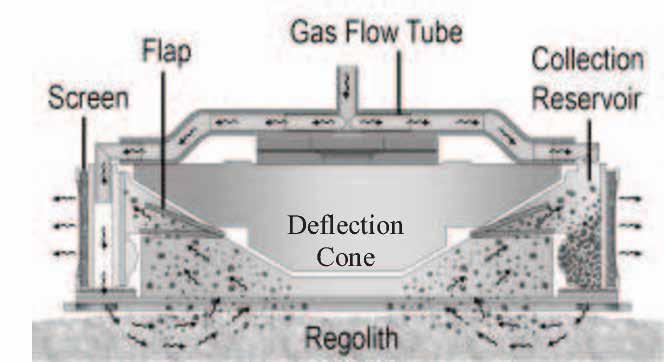
Success! Except, some of the pebbles now blocked the suction from the hoover and blocked the flap that should close the container where the samples (and the hoover head) are contained.
Now some of the samples are leaking out in space. Hold thumbs that when it comes back in 2023 there will still be some of the sample left.
Nobody could have guessed, but we could have asked the cleaner about how the hoover works….
TRANSPORT PROGRAMME CELEBRATING TRANSPORT MONTH
26 OCTOBER - 1 NOVEMBER 2020
10:30 -11:30
13:00 -14:00
14:30 -15:30
MONDAY 26 OCTOBER
Parachute
Water Bottle Rocket
TUESDAY 27 OCTOBER
Firing Up Fuel Cells WEDNESDAY 28 OCTOBER
Build a Bridge
SCIENCE SHOW
Road Safety Quiz Paddle Boat
10:30 -11:30
13:00 -14:00
14:30 -15:30
FRIDAY 30 OCTOBER
Paddle Boat
Build a Bridge
SCIENCE SHOW
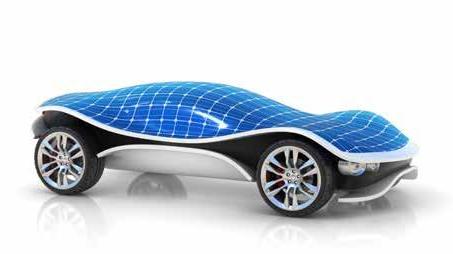
TALE OF COMBUSTION AND MOTION
Transportation became one of the best invention of all times, let us look at the dynamics behind transformation of combustion to motion, be thrilled and entertained as we explore this human achievement.
AGE
ALL
COST
FREE
SATURDAY 31 OCTOBER
Balloon Powered Car
SCIENCE SHOW
Water Bottle Rocket
FLOOR ACTIVITIES
WIND CAR
Energy is transferred from one form to another, namely Kinetic to Potential energy or vice versa, which makes a total sum of energy, the Mechanical energy. Come join us and make your own wind rubber band car.
ROBOTICS
When talking about autonomous cars, it is almost impossible not to discuss artificial intelligence. AI (artificial intelligence) is used to enable cars to navigate through traffic and handle complex situations. Come learn how to program a robotic to see how cameras and sensors in car works.
THURSDAY 29 OCTOBER
Road Safety Quiz
Parachute
SUNDAY 1 NOVEMBER
Fueling the Future
Solar Car
Energy is transferred from one form to another, namely Kinetic to Potential energy or vice versa, which makes a total sum of energy, the Mechanical energy. Come join us and make your own
AGE
7+
When talking about autonomous cars, it is almost impossible not to discuss artificial intelligence. AI (artificial intelligence) is used to enable cars to navigate through traffic and handle complex situations. Come learn how to program a robotic to see how
AGE
ALL
COST
R10
COST
FREE
BUILD-A-BRIDGE
Have you ever asked yourself how bridges work? Why they don’t collapse? How much weight they can carry? Turn this fascination into a learning activity. Join us with your family as we challenge you to build a bridge and work together to create the lightest possible bridge.
PARACHUTE
Have you ever wondered why if you throw any object up in the air, it falls back to the ground? That’s because Earth pulls everything towards it with a force called gravity. Come join us as we build a parachute and launch it.
FIRING UP FUEL CELLS
Fuel cells appear to be the perfect way to generate clean, green electricity by combining oxygen and hydrogen to produce water with a release of energy. In this workshop, we will look at what Fuel Cell technology is, how it works and how it may develop in the future while building a model hydrogen fuel cell car.
ROAD SAFETY QUIZ
How well do you understand road signs? How safe are you on the road? Come join us for road safety awereness with a twist. 6+
AGE
7+
AGE
5+
AGE
8+
PADDLE BOAT
Have you ever wondered why boats are able to move over or across water irrespective of their weight? Come let us show you why.
BALLOON POWERED CAR
Newton’s third Law of Motion, “ For every Action There is A Reaction” has led to the advancement of humanity enabling myriad discoveries over the past century. From the invention of cars, aero planes, helicopters, this theory is amazing. Join us as we build our own balloon powered car.
FUELING THE FUTURE
With the world running low on fossil fuels, it is time we find alternative sources of energy. Join us this transport week as we explore ways to fuel the future.
WATER BOTTLE ROCKET
Rockets are definitely marvels of engineering. These amazing gravitydefying machines have lifted test material, people, and even animals into space. But how are rockets able to travel so high up? What propels them and what is the science behind it all? Find out this as we launch rockets using water.
SOLAR CAR
Solar cells are devices that can generate electricity directly from the sun’s light. Find out how these cells are able to do this while exploring solar power and use this energy from the sun to power up a miniature car.
AGE
6+
AGE
5+
AGE
6+
AGE
7+
AGE
8+
NB: KINDLY NOTE THAT ALL ACTIVITIES ARE SUBJECT TO CHANGE WITHOUT PRIOR NOTICE.
What to tell my children 30 years from now: How COVID-19 transformed higher education The year 2020 will be the climax for many story tellers. In particular, for us who are interested in telling our descendants what really happened especially with strong reference to our experiences. Now, in my previous article I mentioned that the higher education sector was transformed due to COVID-19.
My research has discovered that the e-learning approach has resulted in the dynamic change within the education sector and reinforcing other aspects of the country. If you consider the inequality that is prevalent in South Africa, e-learning becomes complex, in terms of access and opportunity.

To measure inequality, Economists use the Gini coefficient. South Africa has one of the highest inequality rates in the world, with a Gini coefficient of 67.8 in 2015 (Denmark’s is 27.5). As it is well documented, Education remains one of the tools to ensure that inequality is solved.
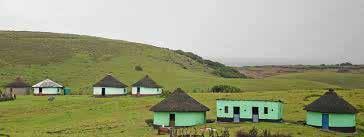
However, with the e-learning process, many people have been excluded because of inequality. To give you a practical example, I had an e-tutor class and most people struggled to join mainly because they had no access or were in areas that were completely underdeveloped. What does this mean?
What to tell my children 30 years from now: How COVID-19 transformed higher education article, although scientists had predicted some sort of pandemic (not one to this extent), universities were minimally prepared.
Because, in all honesty, when we signed up for the long distance approach preCOVID-19, it was based on the fact that we knew what we were signing up for:
We had to have good network coverage/ data, access to the laptop, valid courier address etc. The latter, however, has resulted in other students who were already well on the way to be thrust into a situation where they had no access.

Of course, Universities and the Department of Higher Education had to adapt and acknowledge the existence of such students.
Not everything was as easy as saying ‘the long-distance approach’. Internet data bundles had to be provided to these students. Laptops had to be provided. Telephonic assistance had to be integrated into the learning process. All because not everyone could have access to all the tools required.
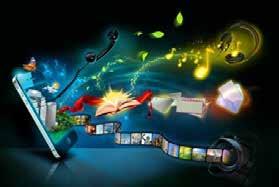
All of this also calls for student financing institutions to look into their financing models in order to provide students with what they need to be successful.
What to tell - 30 years from now (continued)
In essence, we were the first ones to experience e-learning. We had to all of a sudden rely on it especially if we were eager to acquire the qualifications we needed.
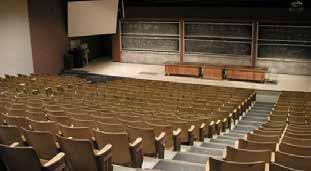
It was a new process that opened us up to using specific programs and understanding the need for technology to proceed with our academic lives. In addition, it meant using these tools to excel and survive against the unfavourable conditions we were finding ourselves in.
Besides being part of the group that was only allowed social interaction in class Pre-Covid-19, we became the students that raised our hands in a classroom with an icon Post Covid-19.
Sending a message in a chat box to the lecturer and literally being in the same WhatsApp group with the lecturer. We were the first generation to be given the platform to hide behind our screens and for some, this meant opening up. While for others, it meant more screen time. We became the students that needed to rest our eyes, buy more expensive data, gain more soft skills and set alarms for class in our sitting room. We became part of a time where the technology that was considered a want suddenly became a necessity. If you had no access to technology, it meant you had higher chances of dropping out.
Masiziba Hadebe
Coronavirus Protect yourself

Wash your hands with soap for 20 seconds

How long is 20 seconds?
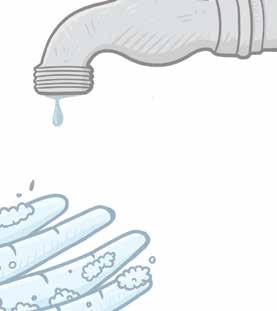

Hum the first verse of our national anthem: Nkosi Sikelel’ iAfrika


CLEAN HANDS SAFER LANDS
What is NSFAS? The National Student Financial Aid Scheme (NSFAS) is a government entity under the Department of Higher Education and Training (DHET)
What does NSFAS do?
Supports access to and success in, higher education and training for students from poor and working-class families who would otherwise not be able to afford the cost of studies at a public university or Technical and Vocational Education and Training (TVET) college. •Provides financial aid to eligible students who are studying or plan to study at any of the 50 TVET colleges or the 26 public universities in South Africa •Identifies students who qualify for the bursary •Provides bursaries to students
Who qualifies for NSFAS funding?
• All South African citizens • All SASSA grant recipients • Applicants whose combined household income is not more than R350 000 per annum • Persons with disabilities with a combined household income of not more than R600 000 per annum • Students who started studying at a university before 2018 and whose household income is not more than R122 000 per annum
What does the NSFAS bursary cover? • Registration • Tuition • Book allowance • Accommodation allowance • Transport allowance • Food allowance • Personal care allowance
Does the NSFAS bursary offer any additional support for students with disabilities? Yes, NSFAS further supports funded students with disabilities through an additional allowance that covers:
• Medical assessments • Assistive devices • Human support to cover for the cost of a caregiver, guide dog, scribe or tutor.
How, where and when can one apply for NSFAS?
The 2021 application season will be communicated through media, social media and the NSFAS website www.nsfas.org.za. Applications are submitted online through the NSFAS website: www.nsfas.org.za
To apply for NSFAS funding students must have a registered myNSFAS account. If you plan to study in 2021 and require support from NSFAS, you may open your myNSFAS account now to keep updated with the latest funding information.
Connect with us using the following channels:
National Student Financial Aid Scheme myNSFAS myNSFAS
NSFAS Connect: www.nsfas.org.za and log into your myNSFAS account










